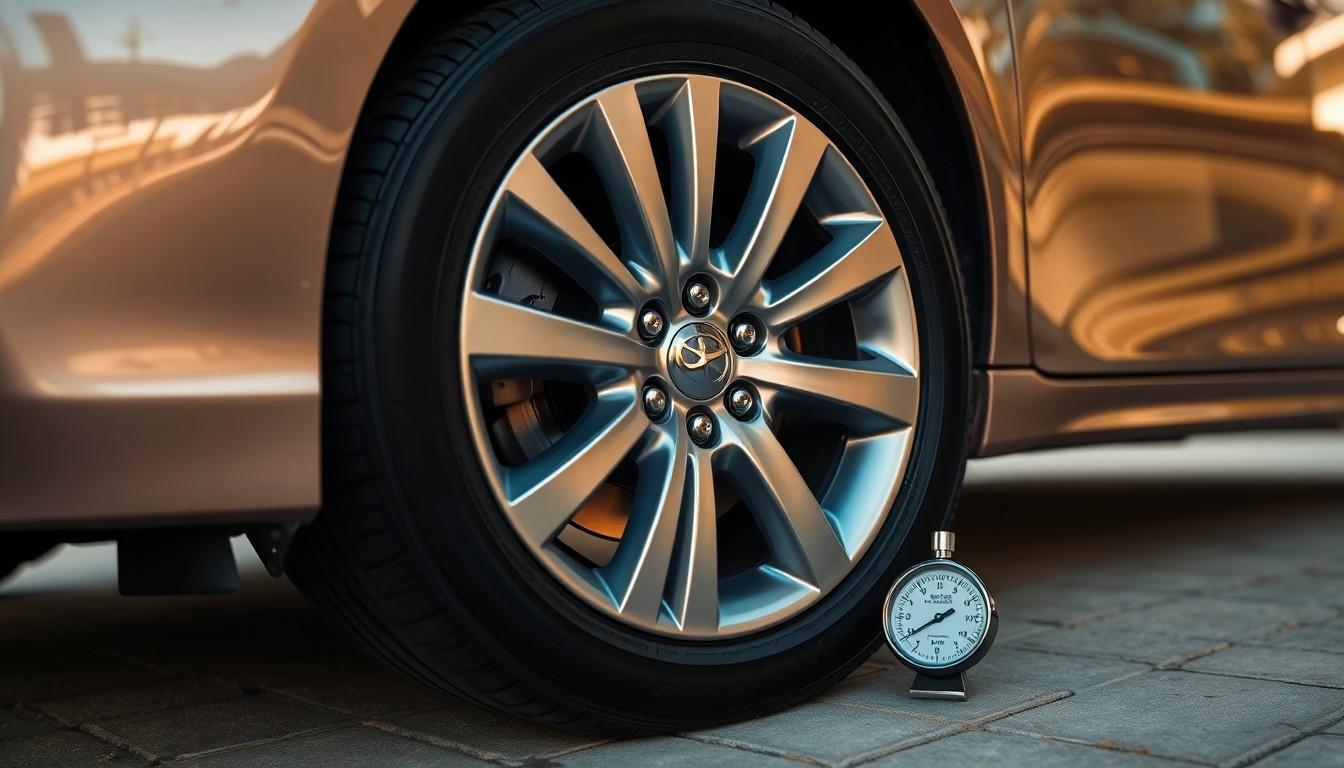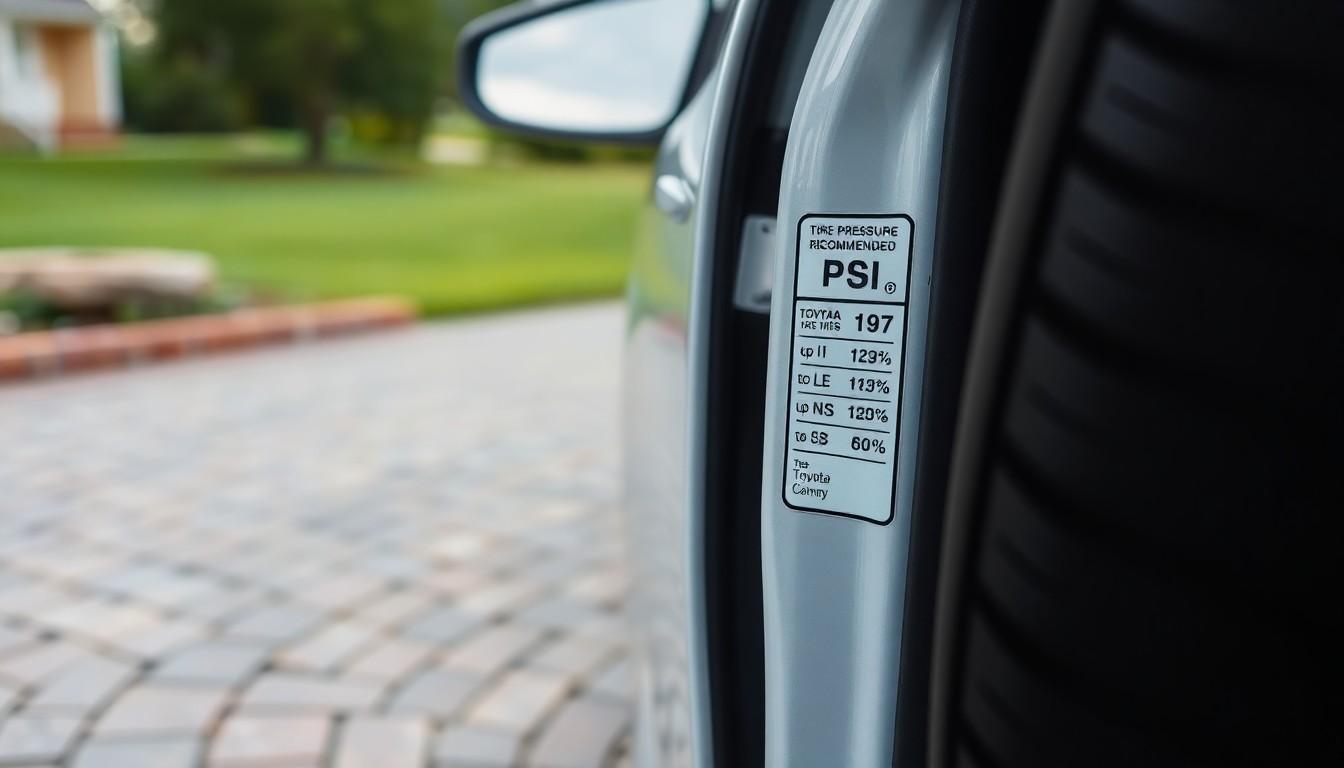Ever noticed that persistent tire pressure warning light on your Toyota Camry’s dashboard? It’s not just annoying—it could be indicating a genuine safety concern. We’ve all been there, frantically checking each tire only to find they’re properly inflated, yet that warning light stubbornly remains on.
The good news? Resetting your Camry’s tire pressure warning system is simpler than you might think. Whether you’ve just filled your tires, replaced one, or completed a rotation, knowing how to properly reset this system is an essential skill for any Camry owner. We’ll walk you through the quick steps to clear that warning light and get back on the road with confidence.
Understanding the Tire Pressure Monitoring System in Toyota Camry
Toyota Camry’s Tire Pressure Monitoring System (TPMS) plays a crucial role in vehicle safety and performance. This intelligent system continuously monitors tire pressure and alerts drivers when pressure levels fall below recommended specifications.
How the TPMS Works in Your Camry
Toyota Camry models use a direct TPMS that employs sensors mounted inside each tire to measure air pressure. These sensors transmit real-time pressure readings to the vehicle’s computer system via radio frequency signals. Data from these sensors appears on your dashboard display, allowing you to monitor all four tires simultaneously. The system automatically performs pressure checks while driving, comparing current readings against manufacturer-specified thresholds programmed into the vehicle’s ECU. Modern Camry models even display the exact pressure reading for each tire, making it easier to identify which tire needs attention.
Why the Warning Light Comes On
The tire pressure warning light illuminates for several exact reasons related to tire safety. Low tire pressure, typically 25% below the recommended PSI, triggers the warning light as a safety precaution. Important pressure differences between tires can also activate the warning system, as uneven tire pressure affects vehicle handling and braking efficiency. TPMS sensor battery failure or damage to any sensor during tire service might cause persistent warning lights. Temperature changes affect tire pressure substantially—a 10°F drop can decrease pressure by 1-2 PSI—often triggering warnings during seasonal transitions. The system also activates when detecting rapid pressure loss, indicating a possible puncture or tire damage that requires immediate attention.
Step-by-Step Guide to Reset Tire Pressure Warning System

Resetting the tire pressure warning system on your Toyota Camry varies depending on your vehicle’s model year and features. We’ve compiled detailed methods to help you successfully reset your TPMS and clear that warning light.
Method 1: Using the TPMS Reset Button
For Older Models (2007-2017):
- Inflate all four tires to the recommended pressure listed on the driver’s side door jamb placard.
- Turn the ignition key to the “ON” position without starting the engine.
- Locate the TPMS reset button, typically positioned near the glove box in these model years.
- Press and hold the reset button until the tire pressure indicator light blinks three times slowly.
- Release the button, wait several minutes for the system to record the new tire pressures, then start your engine.
For Newer Models:
- Ensure all tires are properly inflated to the specifications indicated on your vehicle.
- Find the TPMS reset button, commonly located under the steering wheel on recent Camry models.
- Hold the button until you see the indicator light blink three times.
- Start your engine and drive the vehicle to complete the system recalibration process.
Method 2: Using the Multi-Information Display
For 2018 and Later Models:
- Adjust all tire pressures to match the recommended values.
- Start your Camry’s engine to power up the display system.
- Access the settings menu using the steering wheel controls:
- For 7-inch displays: Navigate to the gear icon on the left tab menu, then select “Vehicle” settings
- For other displays: Use the navigation button to reach the settings menu
- Scroll through options until you find “TPMS” or “Tire Pressure Monitoring System” and select it.
- Highlight the “Set Pressure” option (or similar wording depending on your exact model).
- Press and hold the “OK” button until the system confirms the reset is complete.
The TPMS light should now be reset, though you might need to drive your Camry for a short distance to allow the system to fully calibrate. If the light continues flashing rather than staying solid, this might indicate a more serious TPMS malfunction requiring professional diagnosis.
Common Issues When Resetting the TPMS

Even though following the correct procedures, Toyota Camry owners sometimes encounter persistent issues with their Tire Pressure Monitoring System. Here’s how to troubleshoot the most common problems that occur during the reset process.
Warning Light Won’t Turn Off
The TPMS warning light staying illuminated after a reset attempt is frustrating but typically has straightforward answers. Incorrect tire pressure is the primary culprit behind this issue—all four tires must be inflated precisely to the manufacturer’s recommended PSI levels found on the driver’s door jamb sticker. Many Toyota Camry owners make the mistake of inflating to the pressure listed on the tire sidewall, which differs from what the vehicle actually requires.
System calibration errors also frequently cause persistent warning lights. The reset procedure must be followed exactly as specified for your model year. For 2007-2017 Camrys, holding the reset button until you see exactly three slow blinks confirms proper initiation of the recalibration process.
Temperature fluctuations between when you set the pressure and when you drive can trigger the warning light to reappear. Cold morning temperatures can drop tire pressure by 1-2 PSI for every 10°F decrease, potentially triggering the warning system even after a successful reset.
System Not Recalibrating Properly
Battery issues in the TPMS sensors commonly prevent proper recalibration. Toyota Camry TPMS sensors contain small batteries with a typical lifespan of 5-7 years. A rapidly flashing TPMS light rather than three slow blinks during reset attempts often indicates failing sensor batteries that require replacement.
Incorrect ignition positioning during the reset procedure frequently causes recalibration failures. For 2007-2017 models, the key must be in the “ON” position (not ACC) without the engine running throughout the entire reset process. Starting the engine prematurely interrupts the calibration sequence.
Menu navigation errors plague newer Camry models (2018-2022) with display screen interfaces. The exact path—Settings > Vehicle Settings > TPMS > Set Pressure—must be followed precisely. Many owners accidentally select similar-sounding menu options that don’t actually initiate the reset procedure.
Driving speed and duration requirements sometimes prevent successful recalibration. After initiating the reset, Toyota’s system requires approximately 20-30 minutes of driving at speeds above 25 mph to complete the calibration process. Short trips or stop-and-go driving can prevent the system from finalizing its calibration.
Maintaining Proper Tire Pressure in Your Toyota Camry

Maintaining optimal tire pressure in your Toyota Camry ensures safety, improves fuel efficiency, and extends tire life. Following manufacturer guidelines for pressure levels and regular monitoring helps prevent TPMS warnings and keeps your vehicle performing at its best.
Recommended PSI Levels
Toyota Camry’s recommended tire pressure specifications are found on the tire placard located in several possible positions within your vehicle. This crucial information is typically displayed on the driver’s side doorjamb, inside the fuel filler door, or on the inside of the trunk lid. The placard contains exact PSI (pounds per square inch) values customized to your particular Camry model and tire size. Always refer to these manufacturer-recommended specifications rather than the maximum pressure printed on the tire sidewall, as the placard values are optimized for your vehicle’s performance characteristics, load capacity, and handling requirements.
How Often to Check Tire Pressure
Tire pressure should be checked at least once monthly and before embarking on long journeys to ensure optimal performance. Measurements must be taken when tires are cold—meaning your Camry hasn’t been driven for at least three hours—as driving heats the air inside tires and temporarily increases pressure readings. Morning checks provide the most accurate readings before the day’s temperature affects the pressure. Regular monitoring prevents uneven wear patterns, maintains fuel efficiency, and preserves handling characteristics. During seasonal temperature changes, tire pressure typically drops 1-2 PSI for every 10°F decrease in temperature, making autumn and winter months especially important for vigilant pressure checks.
When to Seek Professional Help

While resetting the Toyota Camry’s tire pressure warning system is typically a straightforward process, certain situations require professional intervention. Understanding these scenarios helps prevent potential safety issues and unnecessary stress when dealing with persistent TPMS warnings.
Faulty TPMS Sensors
TPMS sensors contain small batteries that eventually wear out after 5-7 years of use. A blinking TPMS light often indicates sensor battery failure rather than actual tire pressure problems. Sensors might also fail due to physical damage during tire changes or environmental factors affecting their electronic components. Professional technicians possess specialized diagnostic equipment to identify which exact sensors are malfunctioning and need replacement. Toyota dealerships and qualified tire shops offer sensor replacement services, with costs typically ranging from $50-$150 per sensor depending on the Camry model and year.
System Diagnostic Requirements
Complex TPMS issues sometimes require advanced diagnostic procedures beyond DIY fixes. Professional diagnosis becomes necessary when the warning light remains illuminated even though proper tire inflation and reset attempts. Service centers use TPMS-exact scanners to communicate directly with the system’s control module, identifying programming errors or electronic malfunctions. These diagnostic tools can reset individual sensors, reprogram the entire system, or detect communication failures between components. Temperature-related false readings, system calibration problems, and software glitches also benefit from professional diagnosis. Most automotive service centers charge $50-$100 for TPMS diagnostics, though this fee is sometimes waived if repairs are performed at the same facility.
Conclusion
Managing your Toyota Camry’s tire pressure warning system doesn’t have to be complicated. By following the appropriate reset procedure for your exact model year and maintaining proper tire inflation levels you’ll keep your vehicle safe and performing at its best.
Remember that persistent warning lights might indicate deeper issues requiring professional attention. Regular tire pressure checks especially during temperature changes will help prevent unnecessary warnings and extend tire life.
We hope this guide has equipped you with the knowledge to confidently handle your Camry’s TPMS. Proper tire maintenance isn’t just about clearing a dashboard light—it’s about ensuring your safety fuel efficiency and driving comfort for miles to come.
Frequently Asked Questions
Why does my Toyota Camry’s tire pressure warning light stay on after inflating tires?
Your Camry’s tire pressure warning light may remain on because the Tire Pressure Monitoring System (TPMS) needs to be reset after inflation. The system doesn’t automatically recognize when you’ve corrected the pressure and requires a manual reset to clear the warning. Temperature changes, sensor issues, or uneven tire pressure could also cause the persistent warning light.
How do I reset the tire pressure warning light in a 2007-2017 Toyota Camry?
For 2007-2017 Camry models, first ensure all tires are properly inflated. Locate the TPMS reset button under the steering wheel near the knee bolster panel. With the vehicle on but engine off (ignition in “ON” position), press and hold the reset button until the tire pressure warning light blinks three times. Drive the vehicle for about 20 minutes to complete the calibration.
What’s the reset process for 2018 and newer Toyota Camry models?
In 2018+ Camry models, use the multi-information display in the instrument cluster. Turn the ignition to “ON,” then use the steering wheel controls to navigate to the settings menu. Select “Vehicle Settings,” then “TPMS System,” and finally “Set Pressure.” Confirm the reset when prompted. The system will display “Initialization Complete” when finished.
How often should I check my Toyota Camry’s tire pressure?
Check your Camry’s tire pressure at least once a month and before long trips. Always measure when tires are cold (vehicle hasn’t been driven for at least three hours). Seasonal temperature changes can affect pressure significantly, so more frequent checks during weather transitions are recommended. Regular monitoring helps prevent TPMS warnings and ensures optimal vehicle safety and performance.
What is the correct tire pressure for a Toyota Camry?
The correct tire pressure for your Toyota Camry is listed on the tire placard located on the driver’s door jamb, glove box, or fuel door. Most Camry models recommend between 32-35 PSI for standard tires, but this varies by model year and tire size. Always follow the manufacturer’s specifications rather than the maximum pressure printed on the tire sidewall.
When should I seek professional help for TPMS issues?
Seek professional help if your TPMS warning light continues flashing after reset attempts, if it blinks for 1-2 minutes then stays solid, or if individual tire pressure readings seem inaccurate. These symptoms may indicate sensor battery failure (common after 5-7 years), damaged sensors, or system malfunctions requiring specialized diagnostic equipment that dealerships and service centers provide.
Can temperature changes trigger the tire pressure warning light?
Yes, temperature changes can trigger your Camry’s tire pressure warning light. Tire pressure typically decreases by 1-2 PSI for every 10°F drop in temperature. During fall and winter, sudden cold spells often activate the TPMS warning. This is normal and usually requires just adding air to your tires and possibly resetting the system.
How much does it cost to replace TPMS sensors in a Toyota Camry?
Replacing TPMS sensors in a Toyota Camry typically costs $50-$150 per sensor, depending on whether you choose OEM or aftermarket parts. Diagnostic fees range from $50-$100 if you’re unsure which sensor is failing. Most sensors need replacement after 5-7 years when their non-replaceable batteries die. Professional installation is recommended as sensors require programming to your vehicle.

